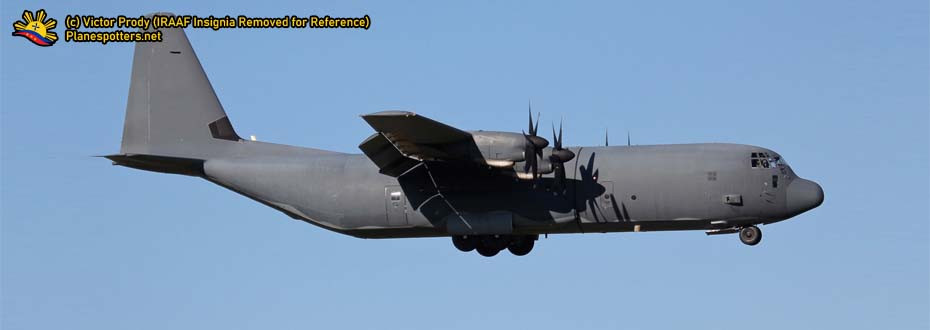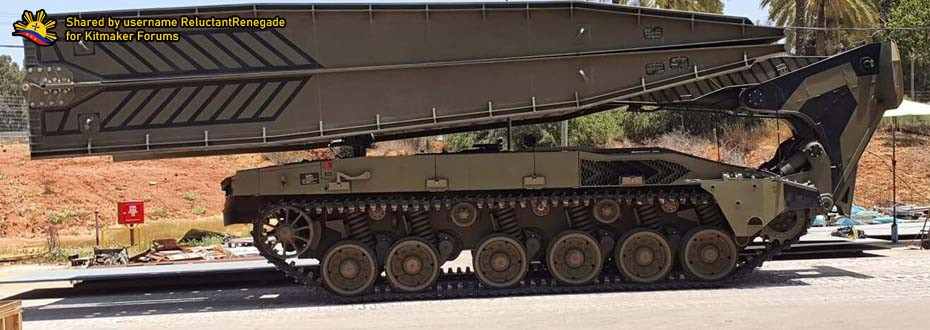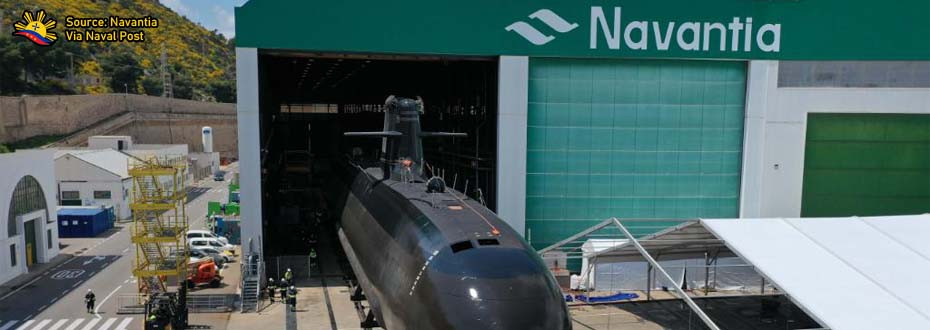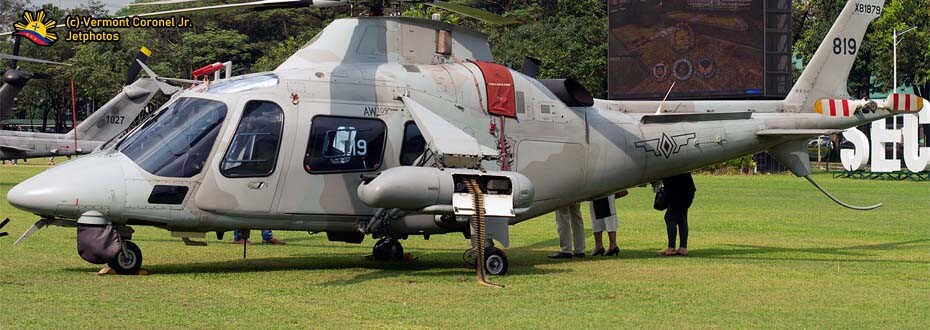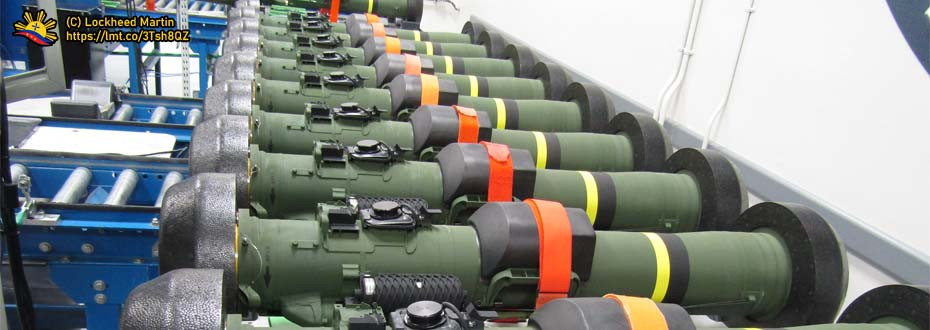IN THE HEADLINES
 |
| The BRP Gabriela Silang (OPV-8301) hours before launching to water through large cranes. Image Source. |
This is the organization's largest vessel yet, as it is part of a deal inked in 2014 that includes a French bank financing scheme and calls for the supplier OCEA to furnish four 24-meter patrol boats known as Boracay-class patrol boats and a single 83-meter ship known as the BRP Gabriela Silang (image above). It is worth knowing that the ship, just like the others after launching, will still undertake sea trials wherein its components will be put to the test as well as for the crew that will soon be assigned to the ship will be undertaking numerous training so as the vessel, aside from its size also obtains features which are considered relatively new not only within the Philippine Coast Guard but also to all of the vessels obtained by the Government of the Philippines, including those in the Philippine Navy.
The delivery, given the statements made by the ranking Coast Guard officials who attended the event, will take place five months from now which is in December, before the year 2019 ends. Once it arrives in the country, it will be viewed as a pleasant Christmas present for the organization, as they will be able to see what will soon become one of the most important assets in the Philippine Coast Guard's arsenal. Obtaining the vessel is just one of the many projects the agency is working on to modernize itself with more capable vessels, as white hulls are now playing a bigger role in protecting the country's waters, particularly the disputed West Philippine Sea, the porous Sulu, and Celebes Seas, and the affirmed waters of the Benham Rise.
KNOWING OCEA S.A.
Website: https://www.ocea.fr/; https://www.ocea-ssm.com/
 |
| The shipbuilder's headquarters is situated in Western France. Image Source. |
Its creation traces back more than three decades ago in 1987 when Roland Joassard and Fabrice Epaud founded the company by taking over a shipyard in Les Sables-d'Olonne - the current headquarters of the company. It is worth taking an interesting fact that the current constitution that the country, the Republic of the Philippines, utilizes on its everyday legal matters was written on this specific year.
Since its inception, this company has opened various workshops across France, the first of which was in the French town of Saint-Nazaire, which is likewise located on the coast in Western France and faces the Atlantic Ocean. While it's military and law enforcement applications come with the production of aluminum-built Offshore Patrol Vessels, this company is also notable for its production of Private Yachts where their aluminum builts are an ideal thing for the production of these luxurious vessels given that it is part of their market chain.
Aside from the private yachts, they are also in the market that produces commercial and passenger vessels, wherein it may obtain a nice additive in terms of dealing with the company given that the Philippines' geographic setup is an archipelago. In fact, the country's maritime setting is something that entices the company to plan and set up shop in the Philippines in such a way that it will not only help the nation improve its Roll on-roll off or RORO vessels and benefiting from contracts along the process but also help the Philippine shipbuilding industry to be more vibrant in a way that they can produce more jobs amongst the locals, as well as have that competitiveness in providing the products given that the labor force in the country is abundant in resources. This is also going with the government's plan in assisting them in their entry that may help their products drive down on cost a bit that may entice the local shipbuilding industry to consider their products and procure them along the way.
With these recent developments within the company's operations and desires to increase its market share and managing its growth by having a workshop/shipbuilding branch in the country, it may not be that surprising if this will mean that both sides will benefit more along the process now that with the plans of entering the nation's local shipbuilding scene may also mean providing them additional orders for OPVs like the BRP Gabriela Silang - the largest one they ever built.
THE OPV-270 DESIGN
 |
| Here is the design that makes the BRP Gabriela Silang. The length of the ship is in fact 83.6 meters. |
The BRP Gabriela Silang is derived from the OPV-270 design in which is considered the largest vessel that is currently offered by OCEA in the market. From here, it is worth knowing that the BRP Gabriela Silang is definitely the first of its class in such a manner that having them is definitely a welcoming thing for the Philippine Coast Guard as well as an outstanding achievement for OCEA given that their plans and designs of the ship are now being produced and soon to be in the Philippine Coast Guard service with the plans of procuring at least one more.
This product boasts its aluminum hull and an environment-friendly engine (2 MTU 16V4000M73) where the power plant composition of the vessel isn't purely a diesel-type one but rather, it runs in diesel-electric hybrid propulsion which is more fuel-efficient than usual diesel-operating ones.
That being said, this is definitely the first Philippine agency ship that comes with a new engine configuration, wherein any key Philippine vessels especially the ones in the Philippine Navy usually operates on a purely-diesel setup (Combined Diesel and Diesel or CODAD) alongside several of their vessels currently in operations that obtain non-purely diesel powerplant wherein four ships in their fleet runs on Combined Diesel Or Gas (CODOG) composition - the powerplants that are situated on board the Del Pilar-class Offshore Patrol Vessels of the Philippine Navy and the incoming BRP Conrado Yap (PS-39) from South Korea.
Both the aluminum hull and the hybrid engine provide the ship an extended patrol range of 8,000 nautical miles (nm), which is twice the ones specified for the Jose Rizal-class frigates that obtain only 4,500 nautical miles. The range, along with the ship's Endurance of 5 weeks (more than a month), means that it can help enhance its patrols in a way that the ship's performance provides that additional capabilities that the Philippine Coast Guard badly needs in patrolling the country's archipelagic setup which renders to be one of the longest coastlines obtained on the planet.
The range and the endurance are not only the benefits that the vessel will provide to the Philippine Coast Guard. Such configuration will also help the organization efficiently operate the ship in a way that having a vessel as large as this one will not bear much of a burden for the organization in terms of operating it. Its efficiency also comes to its effectiveness in performing the duties of a Coast Guard, such as maritime enforcement and providing presence especially in the light of the issues in the West Philippine Sea where one of the best ways to deal with the situation is to employ white hull diplomacy given that China employs its coast guard to enforce its so-called claims over the whole contested sea even if it goes against the International Law.
Read more: "The East Asia White Hull Challenge - PDA; published August 1, 2016"
The aluminum hull in itself obtains both advantages and disadvantages. While the former is the one that usually gets advertised wherein its lightness means operational effectiveness as well as better patrol range, the latter is something that history provides insight with regards to the concerns in using aluminum as the primary material in producing offshore patrol vessels like this one for the Philippine Coast Guard. One example is the incident involving the USS Belknap Guided Missile Cruiser (CG-26) when it collided with the larger USS John F. Kennedy Aircraft Carrier in 1975, where its Aluminum superstructure became a concern for the ship where the material tends to melt when things get heated on extremely high temperatures. Not to mention that damages resulted from extreme ramming of ships which is usual among Coast Guard Vessels in East Asia may get a bit too costly to repair, which in itself may go as a heavy burden for the end-user like the Philippine Coast Guard, unless if the ship keeps its distance from the danger given that this vessel is primarily for Command and Control Operations as what its users are intending for this vessel.
For a comparison of what the pros and cons are for both Aluminum and Steel hulls, check this article written by yacht enthusiasts wherein just like Navy and Coast Guard ones, their marine attributes share the same principle on manufacturing hulls especially in terms of using both properties for their build. Just to take note, OCEA builds the BRP Gabriela Silang on a MILSPEC-grade Aluminum hull built which may go a bit different from the usual aluminum-produced vessels.
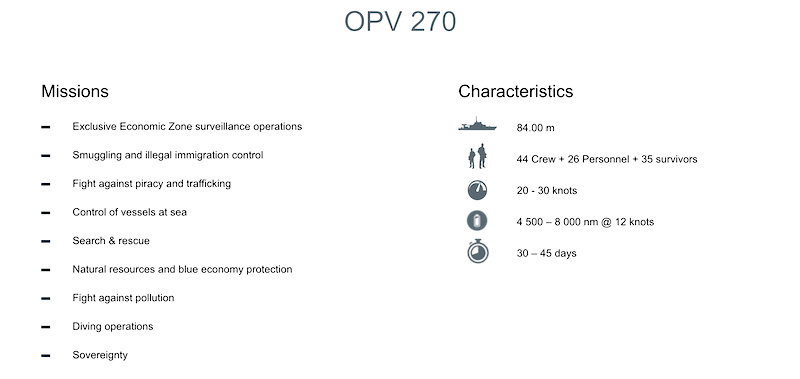 |
| Missions specified as per design and specifications. Obtained via Le Reporter Sablais - A French outlet. |
 |
| This vessel, the BRP Boracay (FPB-2401) is part of this procurement project. |
The production of the BRP Gabriela Silang, along with the four smaller Boracay-class patrol boats (Boracay, Panglao, Malamawi, and Kalanggaman) are contracted under the program named as "The Philippine Ports and Coast Guard Capability Development Project" which itself primarily sought the necessity for the Philippine Coast Guard to Modernize its fleet and organizational setup, much like in the case study that compels their peers in the Armed Forces of the Philippines to Modernize earlier than this organization. To take some note, the contract under this program was signed September 09, 2014, with the Notice to Proceed initiated three (3) years later, on September 23, 2017.
Such project helps improve the organization for the better in a way that it augments both the existing ships in the inventory, as well as the ones procured from Japan such as the 10-unit, 44-meter Tubbataha-class Multirole Response Vessels (MRRVs), in which having these vessels are now getting more of a necessity given the spectrum of how things are being played currently in the West Philippine Sea, as well as the porous Sulu and Celebes Seas wherein smuggling, potential transit of terrorists and cases of piracy that is prevalent in the area that hampers economic progress in the Southern Philippines.
Hence, this welcoming development provides potential future prospects for the organization to have more large vessels such as the BRP Gabriela Silang where the Philippine Coast Guard opts to follow up another such platform for its inventory to have, not to mention that the organization is also benefiting from the planning and production of the incoming 94-meter brand-new Japanese cutters, in which its design may be derived from the Kunigami-class patrol vessels of the Japanese Coast Guard. The Spec-sheet of this class of cutters may be provided later on this blog website.
A BRIGHT FUTURE
 |
| The BRP Gabriela Silang during the construction phase. |
One may take note that the organization will definitely not settle on just one unit of such ship this large for their duties and responsibilities as mandated by law. The Brp Gabriela Silang in this manner serves as a stepping stone for the Coast Guard personnel to have where having a single unit for its crew to man is a nice venue of gathering skills and experience required by the organization in handling large ships in the same way as the Philippine Navy ordered the Del Pilar-class Offshore Patrol Vessels as the stepping stone before purchasing more sophisticated assets such as the Jose Rizal-class Frigates.
The future of the organization is bright with ship of such type is at disposal, as it provides relief to the Filipino fishermen if such vessel accompanied their livelihood as well as its presence providing that message in which the country stands for its national interest, its sovereignty, and the welfare of its citizenry.









